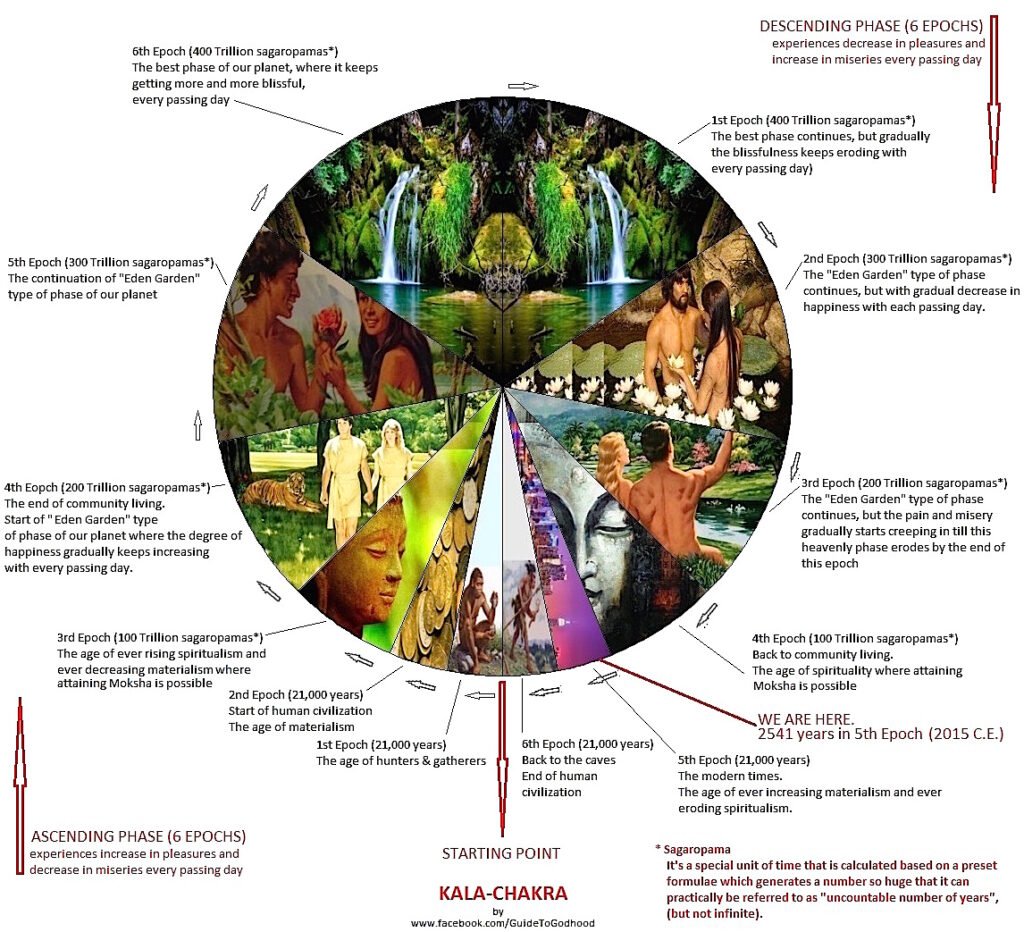The vastness of the cosmos has captivated humanity since eternity. Did the Buddha, through his enlightenment, gain insight into the universe’s expansion and contraction? This blog post delves into Buddhist cosmology, Shramana philosophy, and the concept of Kalachakra, exploring what the Buddha might have witnessed through the lens of Pali references.
Keywords: Buddha, Buddhism, Cosmos, Universe Expansion and Contraction, Jainism, Indian Philosophy, Shramana, Kalachakra, Pali
Shramana Philosophy: The Wellspring of Buddhism and Jainism
The Buddha wasn’t alone in his quest for enlightenment. He belonged to the Shramana school of ancient Indian philosophy, known for its emphasis on meditative practices and liberation from suffering. This school spawned other prominent traditions like Jainism and Ajivika (now extinct), all sharing a common philosophical ground.
The Eternal Wheel of Time: Kalachakra and Pali References

A core concept within Shramana philosophy is Kalachakra, literally translating to “wheel of time.” This concept suggests cyclical phases of the cosmos, characterized by expansion and contraction. Pali references, the original teachings of the Buddha, might hold clues to his understanding of these cycles.
While there isn’t a direct mention of “cosmic expansion and contraction” in the Pali Canon, terms like saṃvaṭṭa-kappa (संवट्ट-कप्प) and vivaṭṭa-kappa (विवट्ट-कप्प) come close. Saṃvaṭṭa-kappa translates to “cycle of involution” and vivaṭṭa-kappa to “cycle of evolution.” These terms describe vast stretches of time where the universe undergoes a process of building up (expansion) and dissolving (contraction).
The Anguttara Nikaya (AN 4.166) mentions these eons:
“… there are these two extremes: a time of contracting and a time of expanding. A contracting time is a great aeon (kappa) running resolutely downwards. An expanding time is a great aeon running resolutely upwards.”
Here, the terms “contracting” and “expanding” could be interpreted as phases of the Kalachakra.
Cosmic Expansion: A Golden Age
During the expansion part, our planet passes through a cosmic phase where it experiences an ever-increasing phase of its resources and pleasures that makes our planet gradually so pleasurable that it eventually becomes something similar to the Garden of Eden as described in the Bible. It’s this phase that is most likely referred to as Cosmic Expansion in the above sutta.
Cosmic Contraction: A Time of Diminishing Resources
Gradually, there comes a time when this expanding phase starts reversing. Here our planet passes through a cosmic phase where its resources start gradually eroding and that is what is referred to as Cosmic contraction above.
Just for info, we are currently passing through the 5th epoch of the cosmic contraction, and as per Shramana predictions, in another 18000 odd years, we will have completely eroded resources on our planet and will be back in caves till the cycle turns around and comes back to in the cosmic expansion phase.
Did the Buddha See Eons of Expansion and Contraction?
The answer likely lies in interpreting the Pali references within the context of Shramana philosophy and Kalachakra. The Buddha, through his enlightenment, would have gained a vision of these vast stretches of time, the cyclical nature of the cosmos, and the impermanence of all things.
Conclusion
This exploration into Buddhist cosmology suggests the Buddha, through enlightenment, may have witnessed the universe’s expansion and contraction cycles. The concept of Kalachakra, found in Shramana philosophy, aligns with Pali references describing eons of “involution” and “evolution,” potentially hinting at the Buddha’s awareness of these cosmic processes. While the Pali Canon doesn’t explicitly mention “expansion and contraction,” these terms appear veiled within the concept of vast eons. The cyclical nature of the cosmos, with flourishing and dwindling phases, aligns with the Shramana perspective on our current state. Though the answer remains open to interpretation, the possibility of the Buddha glimpsing these eons offers a profound perspective on impermanence and the vastness of time.
